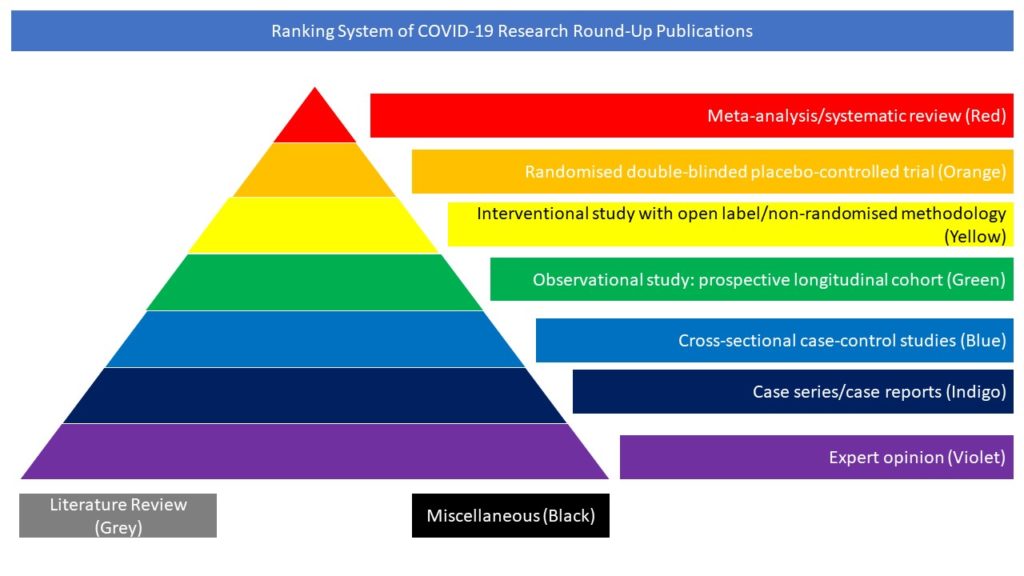Literature Review (Grey)
Read on for our highlighted selection of Covid-related Literature Reviews from the scientific press for March 2023:
- COVID-19 as a Risk Factor for Alzheimer’s Disease
- Sleep disturbance in post COVID-19 conditions: Prevalence and quality of life
- Neuropsychiatric disorders following SARS-CoV-2 infection
COVID-19 as a Risk Factor for Alzheimer’s Disease
Severe acute respiratory disease coronavirus 2 (SARS-CoV-2) is responsible for the coronavirus disease 2019 (COVID-19) pandemic. Although a primarily respiratory disease, recent reports indicate that it also affects the central nervous system (CNS). Over 25% of COVID-19 patients report neurological symptoms such as memory loss, anosmia, hyposmia, confusion, and headaches. The neurological outcomes may be a result of viral entry into the CNS and/or resulting neuroinflammation, both of which underlie an elevated risk for Alzheimer’s disease (AD). In this review, the authors asked the following question: Is COVID-19 a risk factor for AD? To answer, they identify the literature and review mechanisms by which COVID-19-mediated neuroinflammation can contribute to the development of AD, evaluate the effects of acute versus chronic phases of infection, and lastly, discuss potential therapeutics to address the rising rates of COVID-19 neurological sequelae.
Golzari-Sorkheh M, Weaver DF, Reed MA. COVID-19 as a Risk Factor for Alzheimer’s Disease. J Alzheimers Dis. 2023;91(1):1-23. doi: 10.3233/JAD-220800. PMID: 36314211.
Sleep disturbance in post COVID-19 conditions: Prevalence and quality of life
Post COVID-19 conditions are complaints and symptoms in patients with a history of probable or confirmed COVID-19 after 3 months of the onset of COVID-19 and last at least 2 months. About 10-20% of people may experience post COVID-19 conditions, one of which is sleep disturbance. There is a wide range of prevalence of sleep disturbances from 6% to more than 70%. An online survey of the post COVID-19 conditions in various countries showed that 78.58% of subjects had sleep disturbances, including insomnia, sleep-disordered breathing, central disorders of hypersomnolence, circadian rhythm sleep-wake disorders, parasomnias, and sleep-related movement disorders. Sleep disturbance can be found starting from 2 weeks until 48 weeks or more after discharge or after having a negative COVID-19 test results. Women aged < 50 years old with severe COVID-19 infection reported a worse outcome. Several mechanisms may cause sleep disturbance in post COVID-19 condition, namely persistent viral infection and inflammation, immunity dysregulation, and mitochondrial dysfunction. Several studies discovered sleep disturbance was a major problem that affected different domains of QoL in post COVID-19 conditions. Significant correlation was found between several dimensions of SF-36 with moderate-to-severe insomnia in post COVID-19 conditions. Therefore, sleep disturbance is a major problem in post COVID-19 conditions and may affect patients’ QoL, and the existence of sleep disturbance should be a concern in post COVID-19 conditions period. Further research is required to determine the prevalence based on agreed definition as well as methods to assess this condition and its impact on QoL.
Tedjasukmana R, Budikayanti A, Islamiyah WR, Witjaksono AMAL, Hakim M. Sleep disturbance in post COVID-19 conditions: Prevalence and quality of life. Front Neurol. 2023 Jan 9;13:1095606. doi: 10.3389/fneur.2022.1095606.
Neuropsychiatric disorders following SARS-CoV-2 infection
Several large-scale electronic health records studies have reported increased diagnostic rates for neuropsychiatric disorders following COVID-19 (SARS-CoV-2 infection), but many questions remain. To highlight the issues, the authors of this article selectively review this literature, focusing on mood disorder, anxiety disorder, psychotic disorder, and cognitive impairment (‘brain fog’). Eight key questions were addressed, comprising: (i) the nature and magnitude of the risks, (ii) their association with severity of infection, (iii) their duration, (iv) whether the risks differ between adults and children, or between men and women, (v) whether prior vaccination protects against them, (vi) the risk profile associated with different SARS-CoV-2 strains, (vii) what the underlying mechanisms might be, and (viii) whether the sequelae can be predicted. The authors consider the major unknowns, the limitations of electronic health records for research in this area, and the use of additional approaches to help characterise and understand the neuropsychiatric burden of COVID-19.
Harrison PJ, Taquet M. Neuropsychiatric disorders following SARS-CoV-2 infection. Brain. 2023 Feb 2:awad008. doi: 10.1093/brain/awad008. Epub ahead of print. PMID: 36729559.







